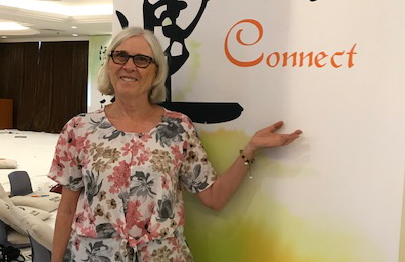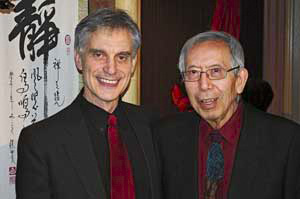The Haven Resonance Model
In the last few years we have featured one of the Haven Models in each of our annual program catalogues. The 2010 catalogue is now available and this year it’s the turn of the Resonance Model. If you’re on our mailing list, you will receive a copy of the catalogue soon; if not, please get in touch and we will send you one. In the meantime, you can download the catalogue here. You can also download our Ideas in Action booklet, which contains this and the other Haven models, or pick up a copy from The Haven.
————————————————————
The Haven Resonance Model describes how people commonly relate to one another in families and society, and with friends and partners, through a basic dynamic of caretaking, pleasing, and conforming. It also describes the possibility of relating on a deeper, more satisfying level, through the revealing to one another of our inner selves.
The model begins with the idea that each one of us is a unique expression of a sea of ‘universal energy’, which might also be called God, or Ch’i. We are born into this world, individuated but still connected to this sea, as unique, pulsating patterns of free-flowing energy. Two such individuals are represented in the diagram, as a circle and a triangle.

As we enter this world, however, we are dependent on others for our survival. Our parents are the first people we encounter in this caretaking role, and we soon learn how best to win their attention, by pleasing them and conforming to their expectations. This first experience is replicated in many different arenas as we grow up and move through life. The square in the diagram therefore represents our parents, and also, more generally, the norms and demands of the society we grow up in, expressed through the authority of family, community, education, religion, and so on.
Our response to the demands of this caretaking square is to surrender much of our individual difference, in order to please, to conform, to fit in – ultimately, to become ‘square’ ourselves. Even if we ‘rebel’ against the demands of society, we still tie ourselves to it by living in reaction against it. As we continue along this path the free flow of our energy begins to contract and freeze. This is represented in the diagram by the boxes around the circle and the triangle. As these boxes rigidify, we begin to lose our connection with universal energy (shown in the diagram with three small lines below the boxes).
Often, we set out to recover a sense of connection through seeking love and relationships. In place of our original connection to one another through universal energy, we learn to ‘take care of’ and ‘look after’ one another (as represented in the diagram by the arrows between the circle and the triangle). This is society’s dominant paradigm of what ‘love’ is, and it is what we have most experienced in our upbringing. In developing our primary and other relationships, we look for people we can look after and who will take care of us. Again we surrender our individuality and strive to please. The cost of this is that we further abandon our authentic selves and often remain with a sense of loneliness, isolation, and meaninglessness. As we experience dissatisfaction in our relationships, we may become locked instead in unproductive conflict or in hopelessness and apathy.
Another way to connect is through a process of self-revelation and sharing. We think this is the process that so often begins in Come Alive and other programs at The Haven. As people begin to breathe and experience their feelings and share these with one another, other members of the group experience their own feelings in resonance. A kind of ‘thawing’ takes place and the rigidified boxes around each of us begin to melt and soften. We can then reconnect with the universal energy of which we all are a part and begin to relate to one another through that energy as well as through the various roles of our lives. In so doing we can add greatly to the quality of our lives and relationships.
The two other models described in The Haven’s Ideas in Action booklet, as well as the concepts of power and strength and the suggestions for breathing, can help us introduce into our relationships this kind of connection through self-revelation, sharing and resonance. Breathing, the Communication Model, and the self-compassion cycle are tools we can use to gradually soften the boxes we have constructed around ourselves and learn to relate to one another in deeper and more satisfying ways. In relationships of this sort we can know ourselves better and experience clarity, loving and connection.
[print_link]
[email_link]




